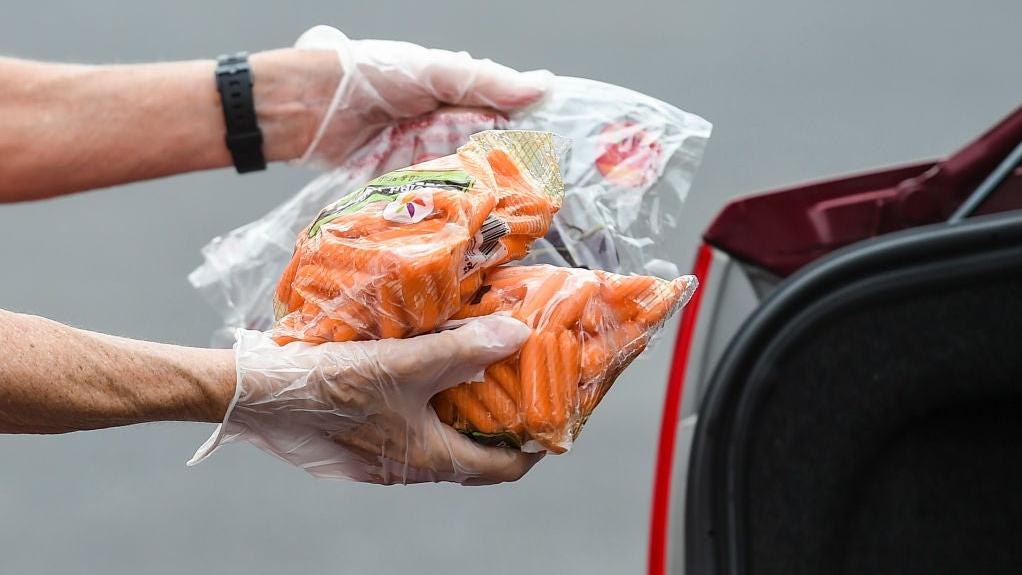Food Insecurity Is Especially Difficult For Those With Food Allergies And Celiac Disease
There aren’t a lot of options available for people in need who also have dietary restrictions.
Of all those experiencing food insecurity during the pandemic, families with members who have allergies and intolerances have been hit especially hard, due to the lack of options available through assistance, the Associated Press reports. Food pantries and government food programs don't often come with dietary choices, and you're stuck with what you're given.
Eight years ago, Emily Brown, a mother of a 2-year-old childwith multiple food allergies, asked if there were any gluten-free or dairy alternatives at her local Kansas City food pantry.
The answer was, "You got something." There were only two things available that her daughter could eat: potatoes and salsa.
"It took, really, all of my strength to make it to the car," Brown told the AP. "I cried in the car and then I just thought to myself, 'We cannot be the only family, I cannot be the only mother, struggling with this."
After her experience at the food pantry, Brown was inspired to start a program called Food Equality Initiative, which serves around 200 families with dietary restrictions. It's one of the few organizations in the country that is doing this work.
Some food pantries contain sections with gluten-free items, and offer allergen information. But during contactless food distribution at the height of the pandemic, many people had no choice but to get pre-made bags of food, which made getting safe alternatives very difficult to obtain.
"Everybody deserves an equal opportunity to select their own foods," Carla Carter, director of outreach and programming at the National Celiac Association, told AP. "COVID drastically changed that into: 'Here's a box of food, good luck.'"
It's a similar situation for those who are on government-assisted food programs. WIC, the program for women, infants, and children, offers substitutes for items in these cases, but not always ideal ones. For instance, if your child can't have peanut butter, the available alternative is beans, not exactly an ideal replacement in a peanut butter and jelly sandwich.
For those on SNAP (food stamps), options like gluten free bread or alternative nut butters are way more expensive, up to two or three times the price of the allergen-laden staples.
There's an estimated 32 million Americans suffering with food allergies, and 85 million people living in households with someone with food allergies or intolerances, according to Food Allergy Research and Education, an allergy advocate group. About 1% of the population is diagnosed with Celiac disease, and 6% have gluten sensitivities, said Carter. With those numbers, it's likely some of those with food insecurities have hard limits on what they can get.
A big challenge is that there's no comprehensive data on the population that's struggling with these issues, so learning who to reach out to is sort of a shot in the dark.
"The challenge we have is that the way we address food insecurity and food programming here in the U.S. is just so general," Brown told AP. The hope is that if things return to what might be considered normal again, choices will return, and advocates like Brown and others hope to open options up for those who have needs that must be addressed.
